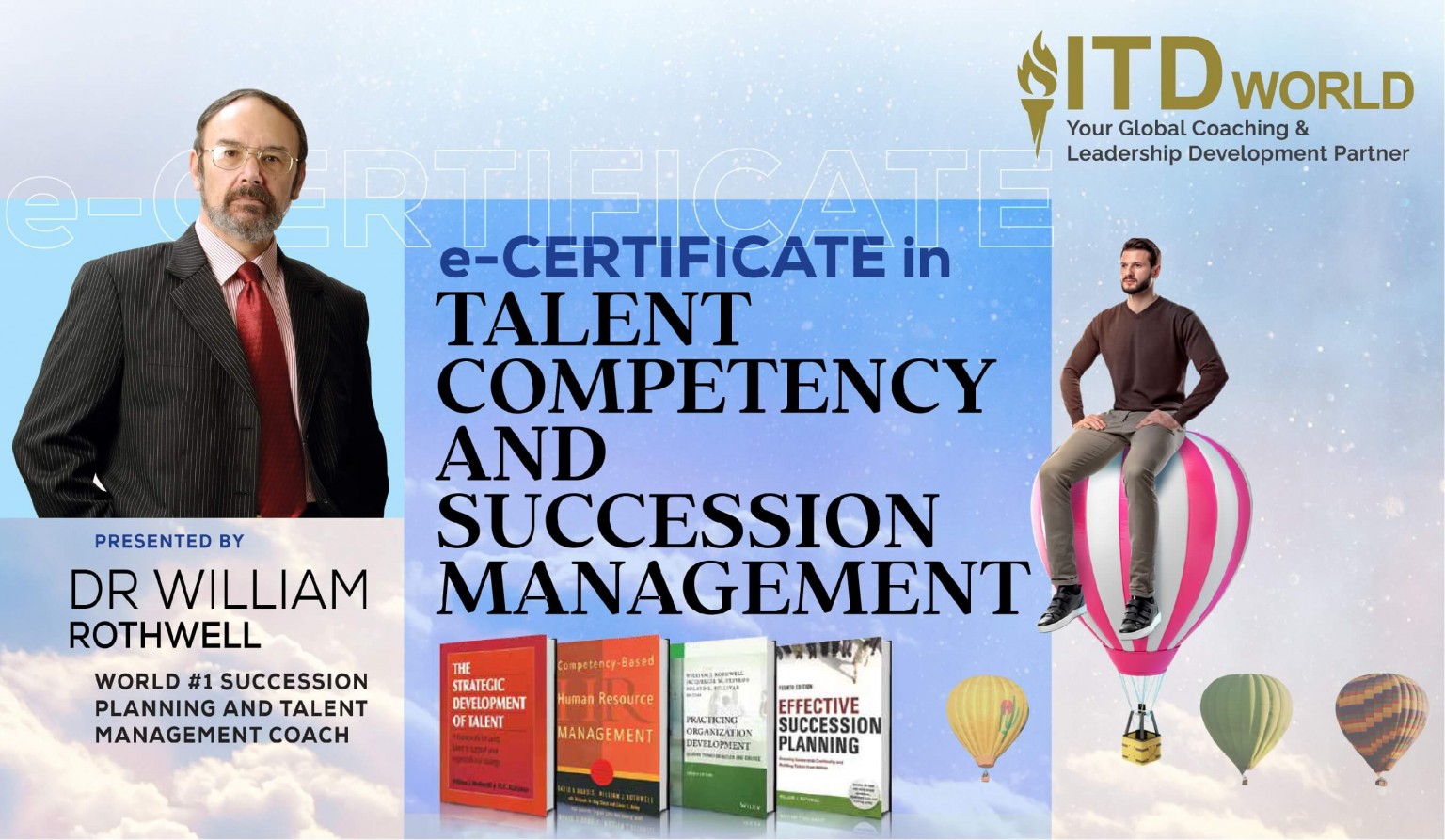In today’s competitive and ever-evolving business landscape, the adage “people are our most valuable asset” holds truer than ever. Organizations that recognize and invest in their talent capital stand not only to thrive but also to lead. Talent management has emerged as the linchpin for achieving organizational success, where the effective acquisition, development, retention, and utilization of human resources can make all the difference.
|
Author: Jonathan M. Pham |
Highlights
- Talent Management is a strategic, systematic, and ongoing approach aimed at optimizing an organization’s human capital to meet its business objectives. It is a subset of HR focused on the strategic attraction (acquisition), development, engagement, and retention of high-performing individuals.
- The process covers the entire employee lifecycle, built upon key pillars including Strategic Workforce Planning (forecasting needs), Talent Acquisition (recruiting), Onboarding, Performance Management, Learning & Development, Career Planning, Succession Planning, Employee Engagement, and Employee Retention.
- Effective talent management is crucial for an organization’s long-term success, leading to improved organizational performance, increased innovation, enhanced services, and significant reduced turnover and hiring costs by building a strong employer brand.
- Organizations face challenges in finding, developing, and retaining talent in a tight labor market, as well as managing diverse, often global, workforces. Developing an effective strategy requires alignment with business goals, a holistic approach, customization, and a data-driven foundation.
What is Talent Management?
Talent management is a multifaceted and ongoing endeavor that encompasses a wide range of practices and strategies – aimed at optimizing an organization’s human capital to meet its overarching objectives. It is a comprehensive approach meant to be aligned with the company’s broader business goals.
One of the process’ fundamental components is the acquisition of top-tier talent – i.e., recruiting those with the requisite skills, knowledge, and potential to contribute to the organization’s success. However, the key point is not just hiring; nurturing and encouraging these valuable team members to stay over the long term are other critical elements that need to be addressed too.
Talent management is primarily overseen by the Human Resources (HR) department. HR professionals are responsible for managing the various initiatives, processes, and procedures related to talent acquisition, development, and retention. For example:
- Offering employee training and development programs.
- Building up a culture of learning and continuous improvement.
- Providing opportunities for members to advance their careers.
- Rewarding and recognizing employees for their contributions.
- Creating a positive and supportive work environment.
- Conducting regular surveys to assess satisfaction and engagement.
- etc.
History of Talent Management
The history of talent management can be traced back to the early 20th century – when businesses began to recognize the importance of having a skilled and motivated workforce. The term was coined by McKinsey in a report that highlighted the importance of human capital for organizational success.
In its early days, the focus was primarily on recruiting and hiring qualified employees. However, over time, organizations began to realize that they also needed to invest in developing and retaining their employees. This resulted in the development of practices such as performance management, learning and development, and career planning.
In recent years, talent management has become increasingly important as organizations have faced a number of challenges, including the globalization of the workforce, the rapid pace of technological change, and the increasing competition for high-performing team members.

Key Components of Talent Management
Talent management is the systematic process of creating and sustaining individual competencies that will help the business deliver strategy.
Dave Ulrich
Typically, the process is made up of the following pillars:
-
Strategic workforce planning
Strategic workforce planning serves as the foundation for all other activities. It entails a comprehensive analysis of the organization’s current and future talent requirements – so that one may come up with strategies that align with the overarching purposes and ensure the right people are available to drive success. Activities include:
- Assessing the skills and competencies needed to achieve business goals
- Forecasting the supply and demand for talent
- Identifying potential gaps or surpluses, and
- Creating strategic plans to address these discrepancies.
-
Talent acquisition
Talent acquisition is the gateway to bringing top talent into the organization. It encompasses designing and executing effective employer branding and recruitment marketing strategies – with the purpose of attracting high-quality candidates, while at the same time showcasing the company’s culture and values.
Successful talent acquisition requires innovative sourcing methods that target diverse and qualified individuals, with a particular focus on aligning their skills and personalities with the organization’s ethos. Once potential candidates are identified, it’s essential to assess their suitability for the roles available. This process involves conducting fair and rigorous assessments, interviews, and background checks to ensure the selected candidates possess the necessary skills, experience, and cultural alignment.
-
Onboarding & Orientation
This phase is critical for ensuring new employees quickly adapt to their roles and become productive contributors. As such, they need to be introduced to the company’s culture, values, and procedures – aside from having access to necessary training and support to facilitate a smooth transition into the new roles.
-
Performance management
Setting clear and measurable goals for employees is a vital component of talent management. Monitoring and evaluating their progress, providing regular feedback/ recognition/ rewards for their achievements, and addressing any performance issues or gaps are all part of this process.
With a robust performance management system in place, team members are better equipped to understand their roles and expectations – this fosters continuous improvement and enables the organization to identify high performers and areas for development.
Read more: High-performance Culture – A Blueprint for Driving Excellence
-
Learning & Development
The main focus of L&D is to create opportunities for employees to acquire new knowledge and skills, thereby enhancing their existing capabilities for future career advancements. It can take various forms, including formal training programs, coaching, mentoring, feedback, and self-directed learning.
Continuous learning and development not only benefit the individual – but also contribute to the organization’s overall growth and adaptability.
-
Career planning
For sustainable growth, organizations must always place a strong focus on helping employees define and work toward their professional goals. Career planning initiatives guide employees on their professional journeys, offering insight into potential career paths, skill development opportunities, and strategies for advancement.
-
Succession planning
Identifying and developing future leaders is another key pillar of talent management. Succession planning ensures that the organization has a pipeline of talented individuals prepared to step into critical roles as current leaders advance or leave the company. This minimizes disruptions and ensures continuity in leadership.
-
Employee engagement
Employee engagement starts with creating a positive and supportive work environment – one where people are empowered, recognized for their contributions, and have opportunities for growth and development. As team members feel valued and motivated, they are more likely to be engaged and productive in their roles.
-
Employee retention
Organizations must design and deliver a work environment that aligns with the needs and preferences of their workforce. Factors such as work-life balance, flexibility, diversity and inclusion, wellness programs, and social responsibility initiatives all play a role in retaining top talent and ensuring their long-term commitment to the company.
Talent Management vs HR
Talent management is not the same as HR – rather, the former is a subset of the latter, which is a broad field that encompasses all aspects of managing people in the workplace. While HR deals with tasks such as recruiting, hiring, onboarding, training, performance management, compensation and benefits, and employee relations, talent management is focused on the strategic and systematic attraction (also known as talent acquisition), development, engagement, and retention of high-performing individuals only.
The role of HR is to provide the infrastructure and support necessary to implement and execute talent management initiatives. This includes developing and implementing people policies and procedures, providing training to managers on how to manage employees, working with senior leadership to map out plans that meet the organization’s current and future talent needs, and collecting/ analyzing data to track the progress of talent initiatives.
| Function | HR |
Talent Management
|
| Focus | All aspects of managing employees |
Strategic management of high-performing individuals
|
| Activities | Recruiting, Hiring, Onboarding, Training, Performance Management, Compensation & Benefits, Employee Relations |
Talent Acquisition (Strategic Recruiting), Development, Engagement, Retention
|
| Goal | Ensure employees can fulfill their roles and meet business objectives |
Attract, develop, engage, and retain top talent to drive competitive advantage
|
| Relationship to Talent Management | Foundation – Provides infrastructure and support |
Subset – Implements strategic initiatives
|

Why is Talent Management Important?
Developing talent is business’s most important task.
Peter Drucker
Talent management plays a pivotal role in an organization’s long-term viability and success. The benefits it offers are countless – namely:
- Improved organizational performance
A survey performed by McKinsey has revealed a strong correlation between investment in talent management and organizational performance. Practices such as evaluation, training, career planning, etc. empower employees to continually enhance their skills and knowledge – which in turn boosts their productivity.
Those who are motivated and engaged in their work are more likely to excel in their roles, contributing to the achievement of strategic goals and the overall success of the organization.
- Increased innovation
A diverse and skilled workforce is a breeding ground for creativity. By attracting and retaining a diverse array of team members, organizations essentially create a melting pot of perspectives and ideas. Fostering a culture that encourages creative thinking further harnesses the potential of these talented individuals, leading to breakthroughs and fresh solutions.
- Enhanced services
Through regular training, employees have the chance to acquire the skills and knowledge necessary to excel in their customer-facing roles. A motivated workforce is more inclined to go the extra mile to satisfy customers, fostering loyalty and a positive reputation.
- Reduced turnover
Talent management, particularly in the form of career planning, succession planning, and retention programs, plays a critical role in reducing turnover. When employees see clear paths for their professional growth and development, they are less likely to seek opportunities elsewhere. This, in turn, helps the organization retain its top-performing members – and eliminates the cost of headcount replacement.
- Attracting candidates
Companies with effective talent strategies are not only adept at retaining existing employees – but also at bringing in new top talent. By creating a positive employer brand and developing its reputation as an exceptional place to work, one becomes a magnet for high-performing individuals who want to be part of a thriving team.
- Building cohesive teams
Talent management practices can identify and assemble people that complement each other’s skills and strengths. This leads to greater teamwork and collaboration, which, in turn, enhances productivity and the quality of work delivered.
- Managing change & risks with ease
In a rapidly evolving business landscape, organizations must be agile and adaptable. Talent management, with its focus on ongoing learning and development, equips employees with the skills and mindset needed to navigate change effectively. Employees who are well-prepared and open to change can help the organization stay competitive and responsive.
Read more: Building High-performing Teams – Power Up Your People for Success
Talent Management Models & Frameworks
Below are some frameworks that serve as structured methodologies to streamline the process.
- Integrated talent management model: This widely utilized model focuses on seamlessly aligning all facets of talent management with the organization’s broader business goals. It takes a holistic approach, covering the entire employee lifecycle, from recruitment to retirement. By integrating various components, it ensures that the workforce’s capabilities and skills are in harmony with the organization’s strategic objectives.
- Competency-based model: Here, the focus is on identifying and nurturing the core competencies essential for success within the organization – so as to guarantee that employees possess the requisite skills and knowledge needed to accomplish their objectives. Competency-based models foster a targeted development approach tailored to each employee’s specific needs.
- 9-box grid: With this approach, employees are categorized based on their performance and potential – as a result, it offers a systematic method for assessing the workforce, identifying those who are prepared for promotion, those who require development, and those who may be at risk of leaving the organization. The 9-box model is an invaluable tool for succession planning and talent development.
- Workforce planning model: Workforce planning is concerned with forecasting the organization’s future talent requirements and devising a comprehensive strategy to meet those needs. It takes into account variables such as the organization’s growth plans, business objectives, and retirement rates. This model ensures that the organization maintains the right talent mix to meet its goals effectively.
- Succession planning model: Succession planning is geared towards identifying and grooming future leaders within the organization. It ensures a ready pipeline of qualified individuals capable of filling critical leadership positions. By nurturing potential leaders, organizations are better equipped to minimize leadership gaps and guarantee continuity in key roles.
Challenges of Talent Management
- Finding the right people: In today’s labor market – characterized by the tightest conditions since the late 1990s, attracting and hiring skilled employees has become a formidable challenge. Workplace culture and rapid technological advancements demand specific expertise, while a global skills shortage exacerbates the problem. Recruitment teams grapple with the task of attracting talent at significantly increased volumes, often with reduced staff. Additionally, candidates have higher expectations, seeking employers who offer flexibility, diversity, inclusion, purpose, and robust career development opportunities.
- Developing & retaining talent: Once employees are hired, organizations need to give them opportunities for growth and development. These can involve formal training programs, coaching, mentoring, feedback, and self-directed learning. However, challenges arise due to the fast pace of change, the need for continuous learning, and the diversity of learning preferences and needs among individuals. Employee retention is another hurdle, with high turnover rates, alternative work options, and dissatisfaction with the work environment or organizational culture all contributing to the challenge.
- Managing performance & succession: Effective talent management requires setting clear and measurable goals, monitoring people’s progress, providing recognition for achievements, and addressing performance issues or gaps. Yet, challenges persist due to the misalignment between individual and organizational goals, difficulties in measuring outcomes and impact, and inconsistencies or biases in feedback and rewards. Succession planning is also demanding, characterized by the uncertainty of future talent needs, scarcity of talent pools, and resistance to change or mobility within the organization.
- Directing a diverse workforce: The workforce is increasingly diverse – this necessitates creating an inclusive workplace culture and implementing policies and practices that support all members. Managing diversity is an ongoing challenge as it requires addressing biases, fostering inclusivity, and ensuring equal opportunities for everyone.
- Operating a global team: Organizations with a presence in multiple countries must navigate talent management across different cultures and legal systems. This complex task involves understanding and adhering to diverse labor regulations, cultural nuances, and expectations across various regions. Ensuring global strategies align with local customs and laws is vital, yet it can be quite a formidable undertaking.
To overcome the aforementioned issues, businesses are required to adopt a strategic, agile, and customized approach to talent management. This approach should align closely with their specific business goals and values. Leveraging new technologies, such as artificial intelligence, data analytics, and social media, can help enhance all aspects of the process, from recruitment and onboarding to performance evaluation and employee development. Furthermore, fostering strong partnerships between HR teams and business leaders is crucial to successfully implementing people strategies and influencing the necessary behaviors throughout the organization.
Read more: Aligning Individual Goals With Organizational Goals

How to Develop a Talent Management Strategy
An effective talent management strategy is one that is:
- Strategic: It should be based on a clear vision – what it means for the organization, and how it can support long-term success.
- Holistic: The entire employee lifecycle, from recruitment to retirement, must be taken into account.
- Customized: Customization means being tailored to the specific characteristics and requirements of the organization, such as its culture, values, size, structure, industry, and objectives. The strategy should be personalized to the individual needs and aspirations of the employees – and adaptable so that it can be adjusted to meet the changing needs of the organization.
- Data-driven: Last but not least, it should be based on data about the organization’s current talent pool and future talent needs.
In order to come up with one, make sure to follow these key steps:
-
Align with business goals
Begin by aligning your talent management strategy with your organization’s short-term and long-term business objectives. Consider what skills and competencies your employees will need to achieve these goals.
For instance, if your company is expanding into a new market, you may place an emphasis on on recruiting those with market-specific expertise.
-
Assess your current talent pool
Evaluate your existing workforce to identify the strengths and weaknesses. Assess the skills and competencies your employees possess and the areas where development is needed. This evaluation will reveal gaps in your talent pool, helping you create a plan to address them.
For example, if you identify a shortage of communication skills, consider implementing training programs that deal specifically with this topic.
Read more: Training Needs Analysis (TNA) – A How-to Guide
-
Identify future needs
Your strategy must be forward-looking, based on an understanding of your organization’s future requirements. This depends on your business goals and the evolving industry landscape. If, for instance, your industry is embracing digital transformation, make sure to prioritize digital skill acquisition and innovation.
-
Develop a comprehensive plan
Create a well-rounded plan that encompasses attracting, developing, and retaining top talent. This plan should detail strategies for recruiting, onboarding, training and development, performance management, and succession planning. For example, your plan might include initiatives for creating a diverse and inclusive workforce, such as targeted recruitment practices and inclusive leadership training.
-
Secure buy-in
After the roadmap has been mapped out, it’s time to communicate it to employees and managers. Make sure to obtain buy-in from senior leadership before implementation – so that necessary resources are adequately allocated for your initiatives. In addition, don’t forget to engage employees in the development and execution of the strategy.
-
Measure & Evaluate
Continuously track the progress of your talent management strategy and be prepared to make adjustments. Key metrics such as employee engagement, turnover rates, and productivity are crucial to assess the success of your implementation.
Talent Management Best Practices
Below are a few principles organizations must keep in mind to optimize their talent management efforts and contribute to their overall success:
- Adopting an integrated approach
A holistic approach considers all aspects of an organization as interconnected and interdependent. By integrating talent management with other processes like strategic planning, budgeting, performance management, and change management, you ensure that talent practices align with broader business objectives.
- Create a strong employer brand
Building a robust and authentic employer brand helps distinguish your organization and attract top talent. Authenticity is crucial, as your brand should reflect the company’s values and culture accurately. A great example is Google, renowned for its innovative and employee-centric culture, which attracts tech-savvy and creative talent.
- Offer competitive salaries and benefits
Competitive compensation packages are vital for attracting and retaining talent. Regularly review salary and benefits to ensure they are competitive in the market.
- Invest in Training & Development
Given the rapidly evolving workplace, training programs are critical for employees to stay up-to-date with the latest industry trends and technology.
- Leverage data & technology
Data and technology play pivotal roles in making informed talent management decisions. Organizations use data to identify talent gaps, forecast future needs, and assess the impact of talent management practices. On the other hand, technological utilities like Learning Management Systems (LMS) streamline employee development by tracking progress and delivering relevant content.
- Foster a culture of learning
Creating a culture that values continuous learning and innovation encourages employees to acquire new knowledge and skills. This culture should also support experimentation and risk-taking. A great example is 3M, known for fostering a culture of innovation through initiatives like the 15% time where employees can dedicate a portion of their workday to pursue their own projects.
- Engage & empower employees
This involves involving employees in the talent management process – seeking their input and feedback. Empowering employees to own their development, career paths, and performance can lead to increased job satisfaction and motivation.
- Develop leaders at all levels
Identifying and nurturing leadership potential at all levels of the organization is essential. Offering leadership development programs, coaching, and mentorship opportunities equips employees with the skills they need to lead effectively.
Read more: Train the Trainer Model – Investing in Excellence

How to Assess Talent Management Effectiveness
Assessing talent management effectiveness is a critical task for organizations looking to maintain a competitive edge and foster a thriving work environment. By using a variety of key performance metrics (KPIs) and following best practices, one may gain a comprehensive understanding of how their initiatives are posing an impact on the business:
- Internal promotion rate: This metric reflects the quality and availability of internal talent. To assess its effectiveness, examine trends over time. An increasing internal promotion rate can indicate that your organization is effectively nurturing and advancing its employees, which potentially means reduced hiring costs and higher employee satisfaction. Conversely, a declining rate may signal issues that need to be addressed soon.
- Employee turnover Rate: A high turnover rate possibly suggests problems with employee retention and satisfaction, which can negatively affect productivity and morale. It can also be indicative of a poor work culture. Lowering the turnover rate should be a priority, and talent management strategies should aim to enhance employee engagement and job satisfaction.
- Retention rate: When employees choose to stay with the organization, it typically reflects their loyalty, commitment, and satisfaction. Retention strategies, such as recognition, rewards, feedback, and career development, may be working. A high retention rate greatly helps reduce the need for frequent recruitment and training.
- Employee distribution: Examining the diversity and inclusion within your organization is essential. A diverse and inclusive workforce is essential to unleashing innovation and improving customer satisfaction.
- Cost per hire: The cost-per-hire metric evaluates the efficiency and cost-effectiveness of your hiring process. Lowering this cost can lead to improved organizational performance and profitability. To assess this metric effectively, you should not only focus on reducing costs but also consider the quality and long-term value of hires.
- Time to hire: A shorter time to hire is a crucial component when it comes to boosting organizational performance, productivity, and customer satisfaction.
In addition to the aforementioned KPIs, consider keeping track of metrics like absenteeism, productivity, and customer satisfaction – in order to construct a more holistic view of how talent management initiatives are working. Additionally, make sure to:
- Diversify KPIs: Avoid relying on a single KPI. Using a variety of metrics allows you to capture a more comprehensive understanding of your strategies’ performance.
- Set benchmarks: Establishing benchmarks for each KPI not only helps monitor progress over time but also aids in identifying areas in need of improvement.
- Regularly track KPIs: Regular tracking, whether on a monthly or quarterly basis, helps in spotting trends and making timely adjustments to your talent management strategies.
- Benchmark against peers: Comparing your results to other organizations within your industry or of similar size provides valuable insights into how your talent management initiatives stack up.
Read more: Talent Philosophy – A Guide to Unlocking Workforce Potential & Driving Success
Skills Needed for Talent Management
For those who are considering getting a job in talent management/ excelling in their current positions, you may want to consider working on the following competencies in order to attain long-term success:
- HR skills: Proficiency in HR functions like recruitment, training, performance management, compensation, and succession planning is a fundamental requirement. Additionally, a comprehensive grasp of employment laws and regulations is recommended to ensure compliance and fairness within the organization.
- Analytical skills: Talent managers nowadays are expected to harness data and technology to drive their decisions, identify talent gaps, forecast future talent needs, and measure outcomes. Utilizing tools such as psychometric tests, behavioral interviews, assessment centers, and onboarding programs is essential for selecting and developing top candidates.
- Strategic thinking: The ability to think strategically is pivotal to aligning one’s efforts with the organization’s overarching objectives and building up a workforce capable of meeting those goals.
- Innovation: Innovation is crucial in addressing the challenges of talent management. This includes finding and hiring the right talent in a competitive labor market, cultivating a diverse and talented workforce, enhancing the employee experience, and fostering a culture of innovation and collaboration within the organization.
- Leadership skills: One should be adept at setting clear, measurable goals for employees, monitoring progress, offering recognition and rewards for achievements, and addressing performance issues. Leadership also entails planning for succession and career development, identifying high-potential talent, and preparing them for future leadership roles.
- Interpersonal skills: Effective communication with various stakeholders is indispensable. Talent managers interact with managers, leaders, employees, candidates, and external partners. Active listening, providing constructive feedback, negotiating mutually beneficial solutions, and conflict resolution are all crucial elements.
- Presentation skills: The ability to articulate/ present strategies and results is important for one to convey their message clearly and convincingly. For this purpose, various media and formats may be put to use – e.g. reports, slides, charts, graphs, and videos – in order to engage and inform.
- Organizational skills: Talent managers often have to handle multiple tasks and projects concurrently. Consequently, effective time management, prioritization of work, meeting deadlines, diligent follow-up on actions, and meticulous documentation of processes are essential for success in this role.
- Problem-solving: Talent management professionals must possess a keen problem-solving ability. They need to identify and address issues related to talent acquisition, development, retention, and performance management. This ensures that challenges are tackled effectively, leading to continuous improvement in talent strategies.
The Future of Talent Management
The future of talent management is poised for significant transformation. In fact, several key trends have been shaping the landscape, and organizations must adapt to these changes to stay competitive and effectively manage their workforce:
- Rise of technology
The integration of technology into talent management processes will continue to gain momentum. Talent management software solutions will play a central role in automating and streamlining HR tasks, from recruitment and onboarding to performance management and employee development. These systems will help organizations efficiently manage talent data, improve decision-making, and enhance the overall employee experience.
- Diversity & Inclusion
Organizations are recognizing the importance of fostering diverse workforces that reflect a wide range of backgrounds and experiences. Inclusivity initiatives, equitable hiring practices, and creating a supportive workplace culture will be essential to attract and retain top talent from diverse backgrounds.
- Cross-functional team mobility
The traditional career ladder is giving way to a more dynamic career lattice. Talent management will increasingly focus on enabling employees to move laterally across functions and departments, allowing them to gain a broader skillset and contribute to various aspects of the organization. This approach enhances employee engagement and helps organizations tap into the full potential of their workforce.
- Rise of artificial intelligence
AI and automation will significantly revolutionize talent management by handling routine, repetitive tasks, thus freeing up HR professionals to focus on strategic and creative aspects of their roles. AI-driven tools will assist in candidate sourcing, resume screening, and predictive analytics for workforce planning.
- Remote work talent strategies
The COVID-19 pandemic has accelerated the adoption of remote work – which requires organizations to come up with policies and procedures that support a distributed workforce. This includes measuring performance based on outcomes rather than hours worked and providing tools for remote collaboration and engagement.
- Data & Analytics
Data-driven decision-making will be at the core of talent management. HR professionals will increasingly rely on data and analytics to assess the effectiveness of their initiatives, identify skill gaps, and predict future talent needs.
- The gig economy
The gig economy is changing the way that people work, and organizations are adapting their talent management practices accordingly. For example, organizations are now more likely to hire freelancers and contractors to fill specific needs, rather than going with full-time employees.
Read more: Talent Transformation – Building a High-performing, Future-ready Workforce

Talent Management Books
- One Page Talent Management: Eliminating Complexity, Adding Value by Marc Effron and Miriam Ort. This book presents a simple and effective approach to talent management that focuses on the essential practices and eliminates the unnecessary ones. It shows how to identify, develop, and retain high-performing employees without adding complexity or bureaucracy.
- The Talent Masters: Why Smart Leaders Put People Before Numbers by Bill Conaty and Ram Charan. In their publication, the authors reveal the secrets of how some of the world’s most successful companies, such as GE, Procter & Gamble, and Hindustan Unilever, manage their talent.
- The Talent Management Handbook: Creating Organizational Excellence by Identifying, Developing, and Promoting Your Best People by Lance A. Berger and Dorothy R. Berger. Here, we have a comprehensive guide to all aspects of talent management, from planning and strategy to implementation and evaluation. The book covers topics such as employer branding, recruitment, assessment, training, performance management, retention, succession planning, and more.
- Drive: The Surprising Truth About What Motivates Us by Daniel H. Pink. This book challenges the conventional wisdom about what motivates people at work. It argues that the old carrot-and-stick approach is outdated – and that the new drivers of motivation are autonomy, mastery, and purpose.
- The Leader’s Daily Role in Talent Management by Peter Chee, William Rothwell, and Jenny Ooi. This one provides a practical and tactical guide for leaders who want to integrate talent management into their daily work. It covers topics such as recruiting, developing, motivating, and retaining the best people, as well as grooming their replacements and recognizing their potential.
- The Strategic Development of Talent by H. C. Kazanas and William J. Rothwell. A comprehensive and strategic guide for organizations that want to optimize their talent performance and align it with their business goals and values. The publication covers topics such as planning and strategy, implementation and evaluation, functional strategies, organizational development, non-employee development, and environmental scanning.
Read more: 60 Talent Quotes – Inspire, Develop, and Lead
Discover ITD World’s Talent Management Certification
At ITD World, we offer a range of talent management certification programs – designed to equip professionals with the knowledge and skills needed to excel in the field of the respective field. Our most notable courses include:
- Certificate in Talent, Competency, and Succession Management (CTCSM). The CTCSM certification course is a comprehensive program designed by Dr. William Rothwell, a renowned expert in the field of HRM. It is aimed at HR professionals, managers, and leaders responsible for talent and succession management within their organizations – so that they are equipped with the knowledge and tools to create effective talent strategies that drive organizational success.
- Certified Talent Development & Learning Professional (CTLP). The CTLP certification, developed by Dr. William Rothwell and Mario Aquino del Castillo, is focused on talent development and learning. It is ideal for individuals responsible for designing and implementing L&D initiatives within their organizations. The program covers key topics such as adult learning principles, instructional design, learning technology, and evaluation of training programs.
In addition to professional competency certifications, we also provide various customized in-house solutions to cater to the specific needs of organizations. Our training programs are tailored to address the unique challenges and goals of each organization – and may concern a wide range of areas, including leadership development, competency modeling, succession planning, performance management, and more.
Contact ITD World today to get a FREE consultation!
Other resources you might be interested in:
- Organizational Transformation: An Essential Guide to Successful Implementation
- HR Business Partner (HRBP): Bridging HR & Business for Remarkable Results
- The Role of HR in Building Organizational Capability
- 360 Degree Feedback: From Theory to Action
- Inspirational Leadership: Igniting Passion & Purpose in Your Team


